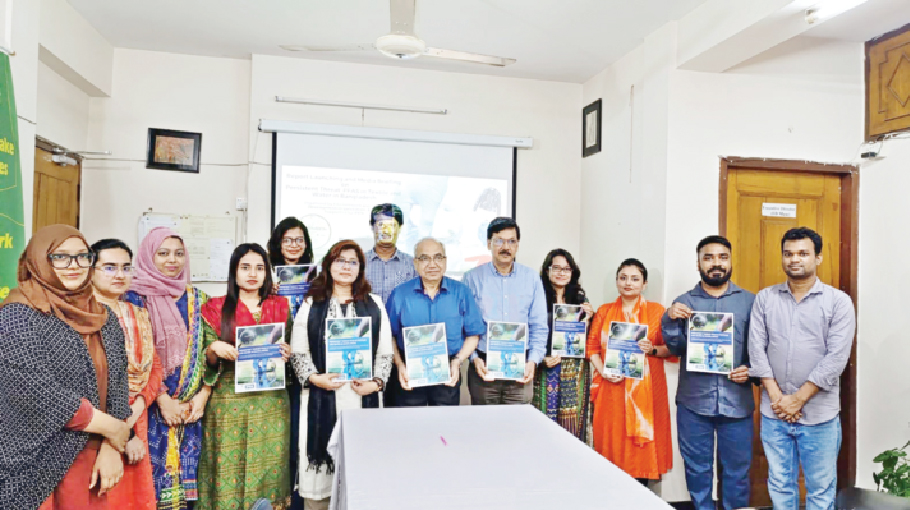PFAS used by industries causing serious water pollution: Study

A study by the Environment and Social Development Organization (ESDO) and IPEN found high levels of toxic PFAS chemicals in surface and tap water samples collected near industrial areas in and around Dhaka, which are centers of the textiles industry.
PFAS chemicals were found in nearly all samples. The water analyses showed that many samples had PFAS amounts above current or proposed regulatory limits in the EU, US, or the Netherlands. Additionally, several samples contained one or more globally banned PFAS.
The study report was launched officially in a ceremony at ESDO office, Lalmatia in the capital on Wednesday, said a press release.
According to the study "Persistent Threat: PFAS in textiles and water in Bangladesh," the industry in Bangladesh is a prominent hub for the global export of "fast fashion," where numerous factories produce clothing for major brands. PFAS are present in numerous products, offering water-, grease-, and stain-resistant properties.
The textiles industry, responsible for roughly 50% of global PFAS usage, is the second-highest emitter of PFAS. “Bangladesh is an international textiles manufacturing hub, and the prevalence of toxic chemical emissions from this sector puts our residents at higher risk. The fashion export industry should not get a free pass to contaminate our rivers, lakes, and taps with PFAS,” said Siddika Sultana, Executive Director of ESDO in Bangladesh.
“Their markets may be global, but the pollution is local. As a party to the Stockholm Convention, Bangladesh should implement PFAS regulations and health-protective standards.” PFAS, or per- and polyfluoroalkyl substances, are a class of chemicals often called “forever chemicals” because of their accumulation and persistence in the environment. They are a threat to human health—having been associated with negative impacts on fertility, fetal development, and thyroid hormone function.
As Bangladesh has no specific regulations on PFAS, the study compares its findings with standards developed or in development in the EU, Netherlands, and USA (expressed in nanograms per liter or ng/L).
“PFAS in our waterways, tap water, and clothing pose serious health and environmental threats, yet industry and policy makers have been slow to respond,” said Dr. Shahriar Hossain, Senior Policy and Technical Advisor for ESDO and lead author of the study.
“Regulating thousands of PFAS chemicals one-by-one would take decades and leave our children at risk. We urgently need global controls on all PFAS chemicals as a class.”



